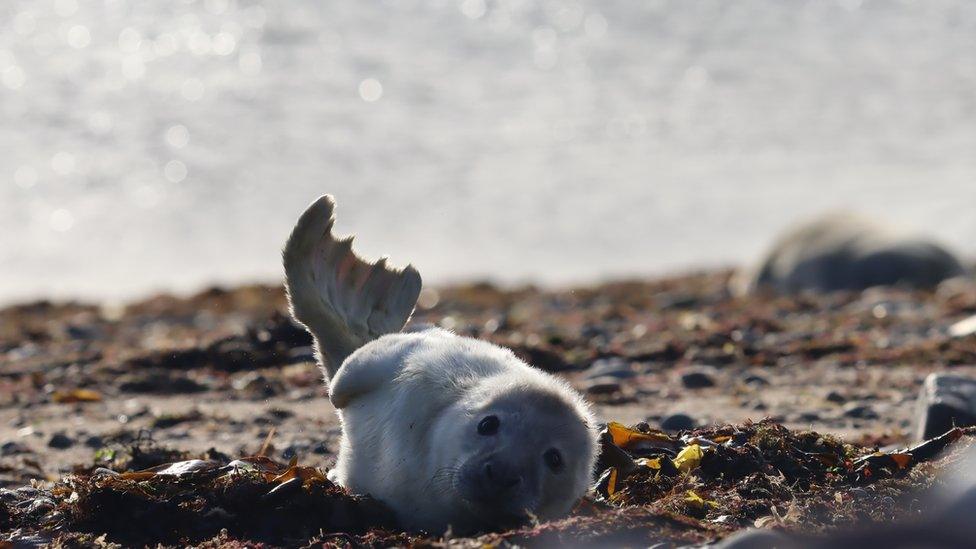South Walney seal numbers rise after dog disruption worries
- Published
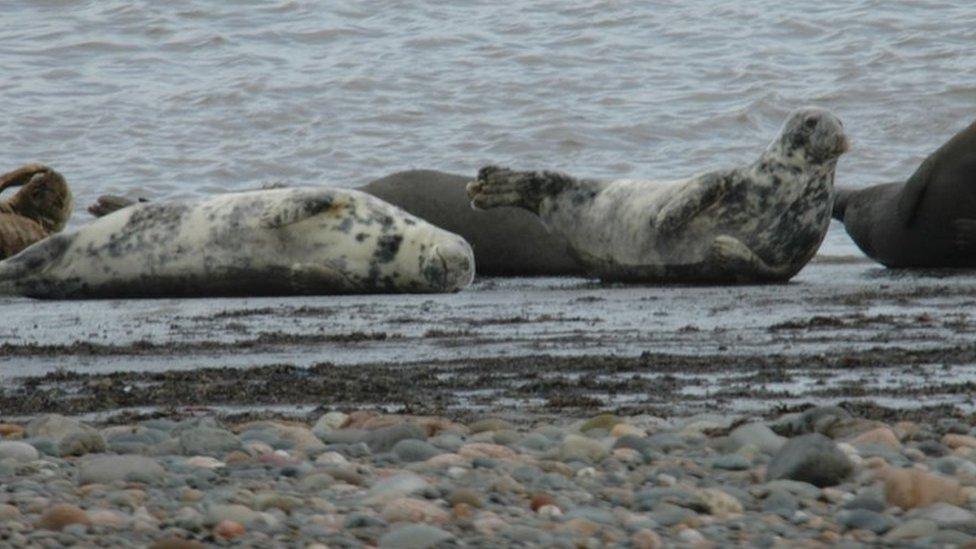
Experts say it is a good sign the seals are resting and appear relaxed despite the disturbances
Seal numbers have increased at a reserve despite fears disturbances by dogs could hamper their breeding.
Earlier this year only 46 seals were counted at South Walney after three incidents involving dogs off leads.
But in the latest count seal numbers had increased to 138.
Marine conservation officer Georgia de Jong Cleyndert said: "It is a good sign that the colony of seals are happy to haul out of the water here to rest, and have recovered from being disturbed."
"Normally during a survey we see a variety of behaviours including alert, relaxed, playing, fighting, moving on land, moving in the water but today all seals were relaxed," she added.
There had been fears seals might not return to the reserve in Barrow-in-Furness at the beginning of January after reports of two men with dogs off leads frightening the animals.
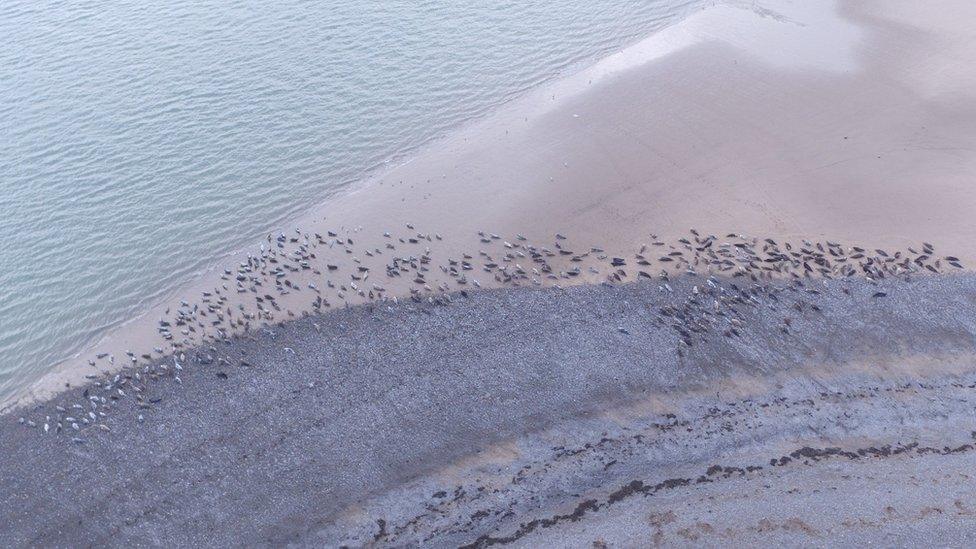
Record numbers of seals were counted between September 2020 and March 2021
It resulted in many seals "flushing", meaning they left their resting site and returned to the water.
Seals spend most of their time out at sea feeding but "haul out" on to rocks, islands and secluded beaches during the winter months.
"Flushing" has a negative impact on the seals who are resting on the shore preserving their energy.
South Walney is the only grey seal colony in Cumbria and between September 2020 and March 2021 there were 518 animals were counted by drone cameras.
It is hoped the numbers continued to build this year.
However, Ms De Jong Cleyndert said one seal was seen with what looked like a rope stuck around its neck.
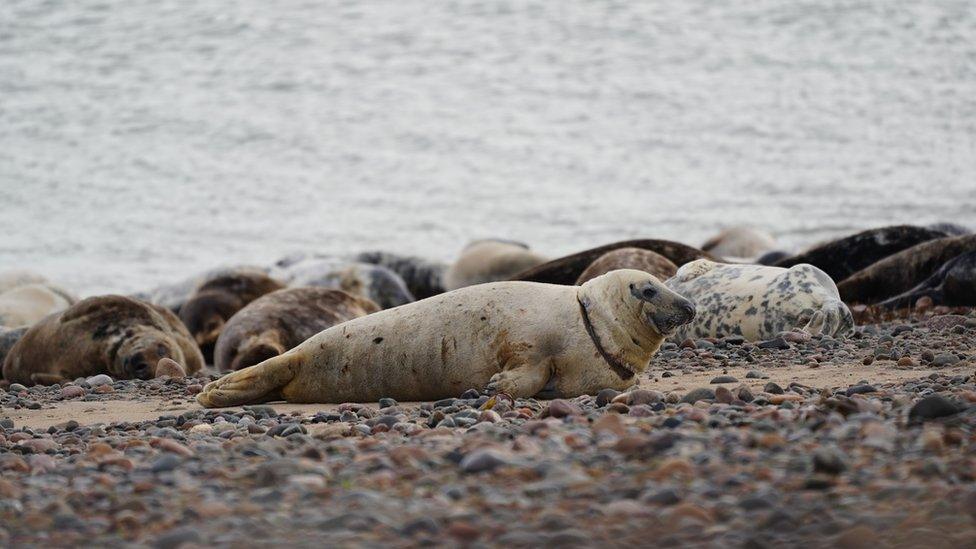
This seal was spotted at Walney with what is thought to be rope tangled around its neck

Follow BBC North East & Cumbria on Twitter, external, Facebook, external and Instagram, external. Send your story ideas to northeastandcumbria@bbc.co.uk, external.
Related topics
- Published18 January 2022
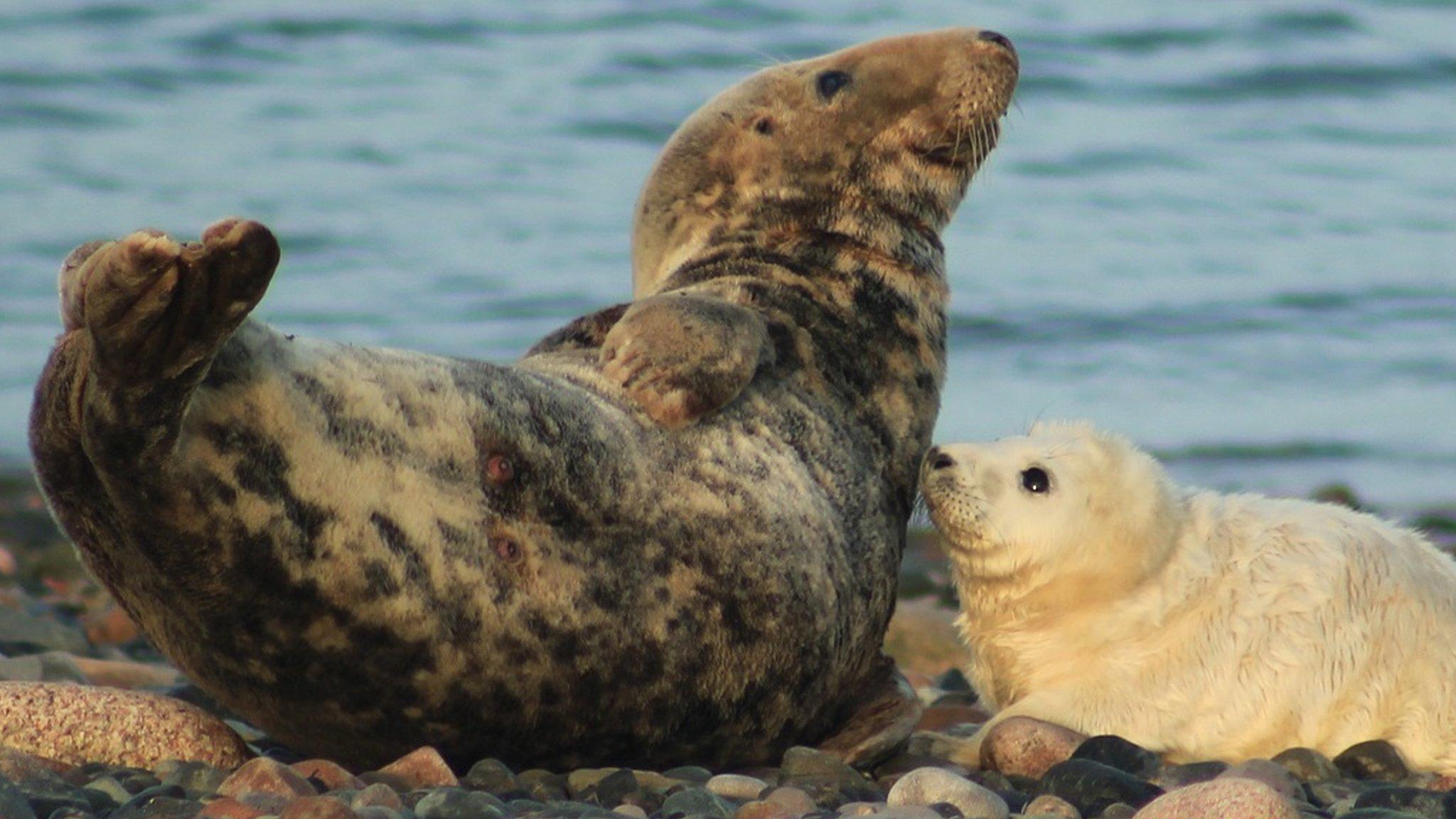
- Published12 April 2021
